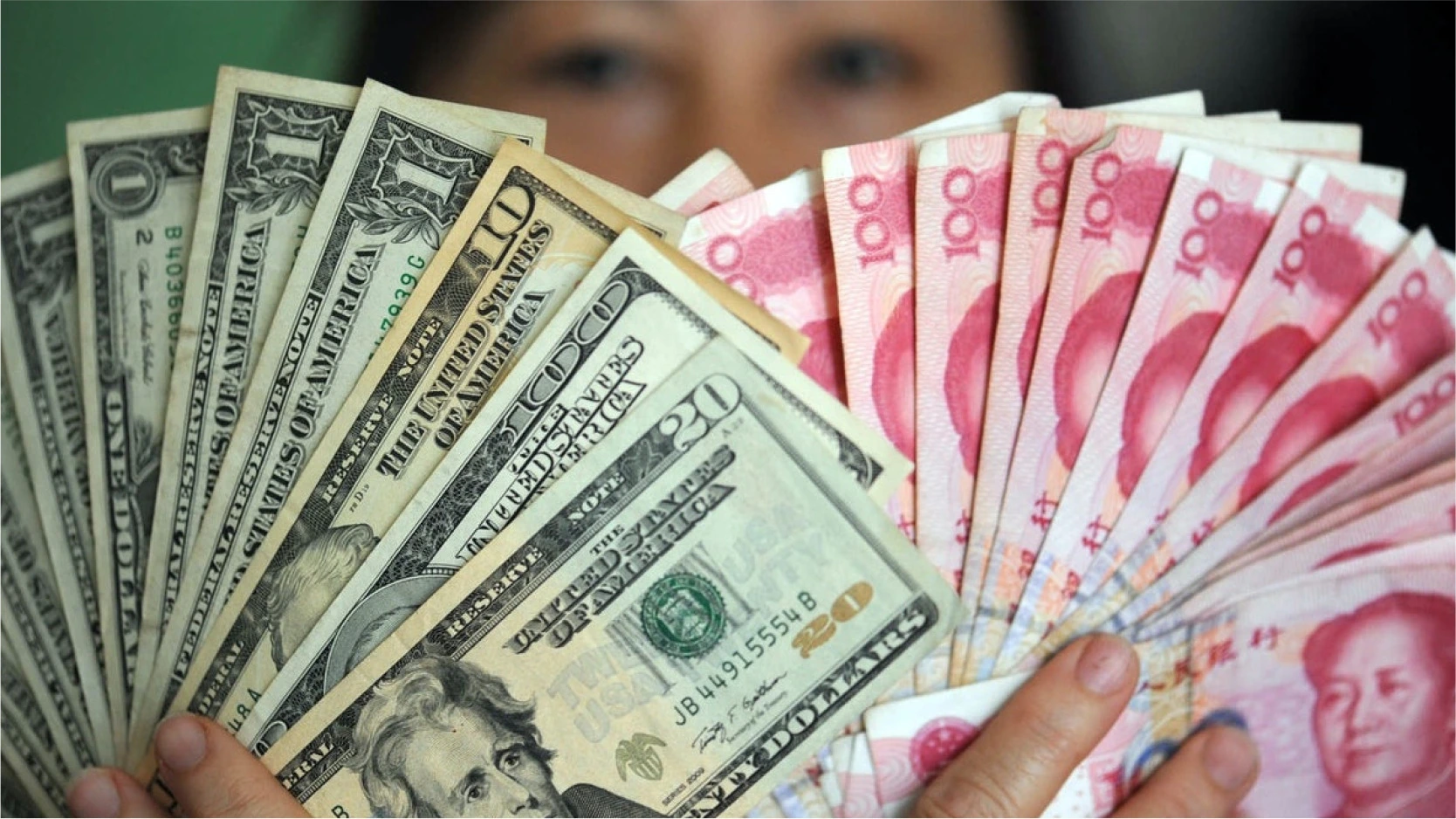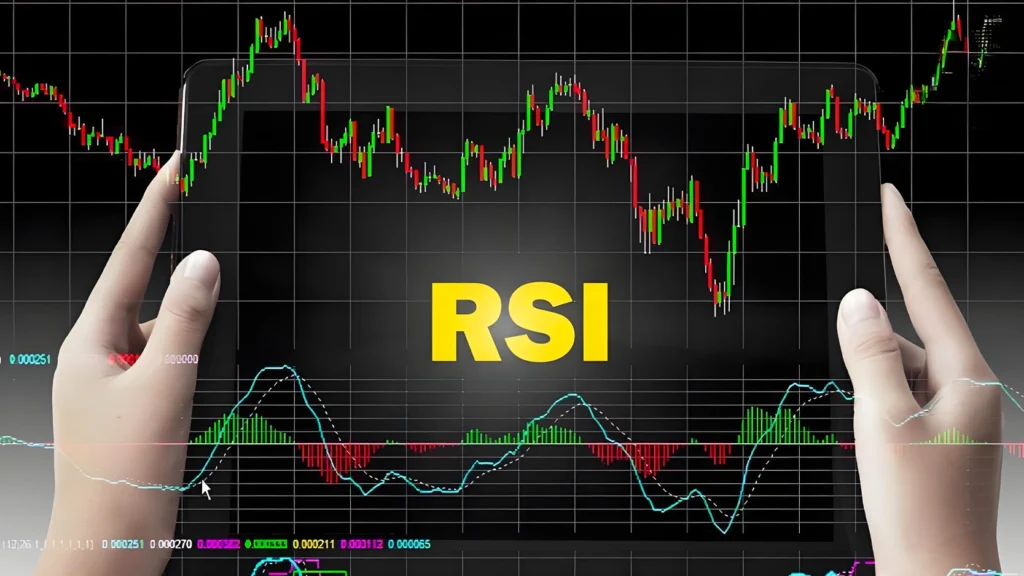What Exactly Is Offshore RMB (CNH)? How Does It Differ From Onshore RMB (CNY)?
In global forex markets, traders frequently encounter the terms Renminbi (RMB), onshore yuan (CNY), and offshore yuan (CNH). While these appear to reference the same currency, they exhibit fundamentally different characteristics in practice, often confusing new investors. In fact, this “one currency, two markets” structure is not an accidental technical divergence, but rather a deliberate national-level economic strategy. Grasping the relationship between these three terms, particularly the nature of offshore yuan (CNH), is essential foundational knowledge for any investor engaging in related currency pair trading.
The Renminbi (RMB) serves as China’s official currency name, just as “Sterling” does for the UK. CNY and CNH represent its two distinct currency codes for trading in different markets, similar to how stocks have different trading codes across exchanges. CNY denotes the Renminbi traded within mainland China (onshore market), while CNH refers to the Renminbi traded outside mainland China (offshore market). For global traders, the RMB you see and can freely trade on foreign exchange platforms is specifically the offshore Renminbi (CNH).
Why Does the RMB Have Onshore and Offshore Markets?
To truly understand the offshore renminbi (CNH) traded in today’s markets, we must examine its historical context. The emergence of CNH was not an overnight market evolution, but rather a carefully planned chapter in China’s economic development blueprint. This history not only reveals the fundamental purpose behind establishing the offshore market, but also provides crucial context for interpreting its exchange rate fluctuations today.
The Prelude to RMB Internationalization
The inception of the offshore RMB market can be traced back to the early 21st century. As China’s economy rose to prominence and gained increasing importance in global trade, promoting the international use of the renminbi became a strategic priority. However, fully opening the domestic capital account could have triggered financial risks which is a scenario policymakers were determined to avoid at the time. Thus, emerged a solution that both facilitated the renminbi’s global expansion and effectively contained risk exposure.
This process unfolded gradually. The first step began in 2003 when the People’s Bank of China (PBoC) initiated RMB clearing services for local banks in Hong Kong, opening a small window for offshore RMB circulation and settlement. Hong Kong, leveraging its unique position as an international financial center with mature financial infrastructure, naturally became the preferred location for this historic experiment.
The critical turning point came in 2010. That year, the PBoC signed a series of agreements with the Hong Kong Monetary Authority (HKMA), allowing direct RMB trading (known as “matching”) between participating banks in Hong Kong without going through designated clearing banks. This move marked the formal birth of CNH, an offshore RMB exchange rate determined by market supply and demand forces, independent of mainland China’s system. This “sandbox” style innovation enabled China to test RMB internationalization without fully opening its domestic capital markets. It allowed observation of global market reactions to the RMB while gradually establishing relevant financial infrastructure, thereby accumulating valuable experience for subsequent larger-scale liberalization.
“Dim Sum Bonds” and Other Financial Products Boost the Offshore RMB Market
As the pilot program for cross-border trade settlement in RMB progressed, a substantial offshore RMB liquidity pool gradually formed in Hong Kong. However, a new challenge emerged: these offshore funds lacked effective investment channels, significantly dampening foreign investors’ willingness to hold RMB. To address this, a series of RMB-denominated offshore financial products emerged, most notably “Dim Sum Bonds”.
Dim Sum Bonds refer to bonds issued in Hong Kong and denominated in RMB. This vivid name reflects both their Hong Kong origins and their initially modest size in the global bond market.
The first Dim Sum Bonds were issued in 2007 by Chinese financial institutions such as the China Development Bank. Although the market was small at first, it set a precedent by providing the first major investment option for offshore RMB beyond bank deposits.
The market’s true turning point came in 2010 when McDonald’s, the U.S. fast-food giant, became the first non-Chinese multinational to issue Dim Sum Bonds, drawing widespread global attention. This milestone signaled that the offshore RMB market’s appeal had expanded beyond Chinese institutions and was gaining recognition from international capital. The success of Dim Sum Bonds significantly enriched the offshore RMB ecosystem. Not only did they address the investment needs of offshore RMB, but they also helped establish an offshore RMB yield curve, providing a benchmark for pricing more complex financial products. From this foundation, further financial innovations emerged, including RMB-denominated funds, insurance products, and derivatives. Together, these developments infused vitality and depth into the offshore RMB market, transforming it from a mere trade settlement tool into a more complete financial market with investment and financing functions.
Both Are Renminbi, but What Are the Core Differences Between Offshore (CNH) and Onshore (CNY) Renminbi?
While both offshore (CNH) and onshore (CNY) renminbi originate from the same currency–RMB and theoretically maintain a 1:1 exchange ratio, their actual behavior in global forex markets differs substantially. For traders, clearly identifying and understanding these differences is crucial because they directly impact market analysis, risk assessment, and trading decisions.
Fundamental Differences in Regulatory Systems and Market Positioning
The most essential distinction lies in the regulatory framework and market positioning behind each. Onshore renminbi (CNY) circulates within mainland China as the official legal currency and operates under the strict supervision of the People’s Bank of China (PBoC) and the State Administration of Foreign Exchange (SAFE). This market’s primary function is to serve China’s domestic economic activities and trade settlements, with stability being the foremost policy priority. As a result, all cross-border flows and exchanges involving CNY are subject to strict capital controls.
In sharp contrast, offshore renminbi (CNH) is primarily traded in international financial centers outside mainland China, such as Hong Kong, Singapore, and London. CNH was created to promote the use of renminbi in international trade and investment, and from the outset it was designed with greater flexibility. While offshore regulators such as the Hong Kong Monetary Authority (HKMA) do provide oversight, the exchange rate and liquidity of CNH are largely determined by global market supply and demand, with far less direct intervention compared to CNY. This regulatory difference makes CNY a relatively closed and stable “policy-driven market”, while CNH functions as a more open and volatile “market-driven market”.
Dual-Track Exchange Rate Mechanism
The difference in regulatory systems directly results in a “dual-track” exchange rate mechanism, which is the most important technical distinction traders need to understand.
CNY operates under a “managed floating exchange rate system”. Specifically, each morning the People’s Bank of China (PBoC) announces an official “central parity rate” based on the previous day’s closing price and the movements of a basket of currencies. During the trading day, the USD/CNY spot rate is only allowed to fluctuate within a narrow band of ±2% around this parity rate. If the rate approaches the edge of this band, the central bank has the authority to intervene in order to maintain stability. This mechanism is designed to prevent sharp currency swings and ensure the stability of China’s domestic economy and financial system.
In contrast, the CNH exchange rate mechanism is a “market-driven free float”. Its price is determined entirely by the trading activity of global buyers and sellers in the offshore market, without the constraints of a daily central parity rate or a defined fluctuation band. As a result, CNH can respond more immediately and sensitively to changes in international market sentiment regarding China’s economic outlook, policy expectations, and global risk appetite. This explains why while CNY and CNH share a nominal 1:1 face value, their exchange rates against the US dollar or other foreign currencies can be differ, creating a spread between the two markets.
A World of Difference in Convertibility and Liquidity
From a practical standpoint, the differences in convertibility and liquidity have the most direct impact on businesses and investors.
CNY is subject to strict capital controls, with relatively limited convertibility. This means that freely converting CNY into foreign currencies and remitting funds overseas requires approval and is subject to quota restrictions. For foreign companies conducting business in mainland China, the payments they receive are in CNY. However, if they wish to use these funds for investments or payments outside mainland China, they must first convert them into CNH or other foreign currencies which is a process that is strictly regulated.
CNH, as an offshore currency, is fundamentally characterized by its free convertibility. In offshore markets like Hong Kong, any individual or institution holding CNH can freely convert it into major currencies such as US dollars or euros without restrictions, and transfer or use the funds globally. This high degree of freedom makes CNH the primary tool for international investors to trade China-related concepts, allocate assets, and hedge RMB exchange rate risks. At the same time, due to extensive participation from global players, the CNH market typically enjoys deeper liquidity and better reflects international capital flows, though this also means it may experience greater volatility than its onshore counterpart.
To clearly summarize these fundamental differences, the following table provides a direct comparison:
| Feature | Onshore RMB (CNY) | Offshore RMB (CNH) |
| Trading Location | Mainland China | Outside mainland China (e.g., Hong Kong, Singapore, London) |
| Regulatory Body | People’s Bank of China (PBoC) / State Administration of Foreign Exchange (SAFE) | Primarily market-driven, influenced by offshore regulators such as the Hong Kong Monetary Authority (HKMA) |
| Exchange Rate | Managed float (allowed to move within ±2% of daily central parity rate) | Free-floating (determined by market supply and demand) |
| Main Usage | Domestic trade and transactions | International trade, investment, and financial transactions |
| Convertibility | Restricted by capital controls | Fully convertible |
What Factors Influence the Exchange Rate of Offshore RMB (CNH)?
As offshore renminbi (CNH) is a market-driven currency, its exchange rate resembles a complex tapestry woven from economic data, policy signals, and global sentiment. For traders seeking to anticipate market movements, it is essential to understand these intertwined threads.
China’s Macroeconomic Data as a Barometer
As the window through which China’s economy faces the world, the CNH exchange rate is to a large extent a direct reflection of the country’s macroeconomic health. International investors closely monitor key economic indicators released by China and use them as a basis for assessing the intrinsic value of the renminbi.
- Gross Domestic Product (GDP) Growth Rate: This is the core indicator of overall economic vitality. Strong GDP growth usually boosts confidence in China’s economic outlook, attracts foreign capital inflows, and increases demand for CNH, driving its appreciation.
- Consumer Price Index (CPI) and Inflation Rate: Inflation levels directly affect a currency’s purchasing power. Sustained, moderate, low inflation supports currency stability. However, excessively high inflation can erode real value, raise concerns over capital outflows, and exert depreciation pressure on CNH.
- Trade Balance: As one of the world’s largest trading nations, China’s trade surplus or deficit has a significant impact on exchange rates. A substantial trade surplus means export earnings in foreign currency far exceed import needs. Companies then need to convert large amounts of foreign exchange into renminbi, which directly increases demand for the currency and provides upward momentum for CNH.
Related Reading: What Is the Consumer Price Index (CPI) and Why Is It a Key Data Point Traders Must Watch?
The Tug-of-War Between Policy Signals and Market Sentiment
Beyond quantifiable economic data, a number of intangible yet highly influential factors also shape the trajectory of CNH. This is an ongoing tug-of-war between policy intentions and market sentiment.
- Policy Signals from the People’s Bank of China (PBoC): Although CNH is traded offshore, its movements remain highly sensitive to expectations of the central bank’s monetary policy. Markets closely interpret signals related to interest rate adjustments or changes in the reserve requirement ratio (RRR). For example, if markets expect the PBoC to adopt an easing stance (cutting rates or lowering the RRR), this is usually seen as negative for CNH and may trigger depreciation.
- Indirect Official Intervention: At certain times, even without directly entering the market, the PBoC has tools to influence offshore trading. A typical example is tightening RMB liquidity in offshore markets, thereby pushing up the CNH Hong Kong Interbank Offered Rate (CNH HIBOR). This sharply increases the cost of shorting CNH, effectively curbing depreciation expectations and speculative activity.
- Geopolitics and Trade Relations: Shifts in international relations, especially tensions or easing in US-China trade relations, have an immediate impact on market sentiment. Any escalation in trade disputes can spark risk-off behavior, prompting investors to sell CNH and putting downward pressure on its value.
Onshore–Offshore Spread and Capital Flows
The dynamic relationship between CNH and CNY is itself an important market indicator. The exchange rate spread between the two serves as a key window into capital flow pressures and overall market sentiment.
Normally, this spread remains within a relatively narrow range. However, during periods of market turbulence, the gap can widen significantly. For instance, when CNH depreciates much more sharply than CNY (i.e., the CNH/CNY spread turns negative and widens), it often signals strong capital outflow pressures or rising negative sentiment toward China in international markets. Vice versa.
The existence of this spread has also given rise to arbitrage trading. When the spread becomes large enough, traders can buy renminbi in the cheaper market while simultaneously selling it in the more expensive one to capture risk-free profit. This arbitrage activity itself creates a market correction mechanism, buying the cheaper currency pushes its price higher while selling the more expensive one drives its price lower, thereby narrowing the spread between the two. In addition, overall global risk appetite (risk-on/risk-off) also affects CNH, as it is to some extent regarded as a representative of emerging market currencies. Rising risk-aversion sentiment tends to weigh on CNH. Therefore, analyzing CNH requires a dual perspective: not only paying attention to traditional macroeconomic fundamentals, but also understanding its unique linkage with the onshore market and its high sensitivity to policy signals.
What Role Does Offshore RMB Play in the Internationalization of the Renminbi?
Understanding offshore renminbi (CNH) is not only about capturing current trading opportunities, but also about grasping an ongoing, far-reaching shift in the global economic landscape—the internationalization of the renminbi. The future of CNH is closely tied to China’s position and ambitions on the world economic stage. It serves both as the pioneer of this grand process and as a reflection of the challenges it faces.
From its inception, CNH has played a dual role as both a “testing ground” and a “firewall” for RMB internationalization. It provides China with a steady path to gradually expand the renminbi’s functions in global trade settlement, investment and financing, and as a reserve currency without fully liberalizing the domestic capital account or exposing itself to potential financial shocks. Through Hong Kong as the primary offshore hub, China can test global market acceptance of RMB-denominated assets, refine cross-border payment systems, and accumulate experience in managing an open economy.
In recent years, the internationalization of the renminbi has made significant progress. According to data from the Society for Worldwide Interbank Financial Telecommunication (SWIFT), the RMB has firmly established itself as the world’s fourth most-used payment currency. At the same time, the People’s Bank of China has signed bilateral local currency swap agreements with the central banks of dozens of countries and regions, with a total scale reaching several trillion yuan. These agreements provide liquidity support for bilateral trade and reduce reliance on a single third-party currency.
However, the road ahead remains full of challenges. The core bottleneck of renminbi internationalization lies in its true convertibility and the level of global trust in it as a store of value. Recent cases have highlighted this issue. For example, some countries have accepted RMB as a trade settlement currency through bilateral agreements, only to later face difficulties in effectively using these RMB assets or converting them into other hard currencies or assets. Reports indicate that some countries, after receiving RMB, chose to exchange it for gold at the Shanghai Gold Exchange. This reflects the reality that while the RMB’s role as a transaction currency is expanding, its attractiveness as a long-term store of value is still subject to market testing. A profound contradiction lies behind this: on the one hand, there is the push to promote the widespread use of RMB; on the other hand, there is the need to manage the potential pressures on foreign exchange reserves that such use might generate.
Looking ahead, the development of new technologies such as the digital renminbi (e-CNY) may offer new solutions for cross-border payments, further supplementing and evolving the existing CNH system. However, the success of RMB internationalization will depend on whether it can shift from a “push model” driven mainly by bilateral agreements and policy support into a “pull model”, where the global market adopts it voluntarily for its inherent stability, liquidity, and ease of use. The key to this transformation lies not only in financial innovation, but more importantly in building deep, widely recognized international trust.
Conclusion
Offshore renminbi (CNH) is not merely a simple mirror image of onshore renminbi (CNY). It is a carefully designed product of China’s grand strategy to internationalize the renminbi in the era of globalization. CNH represents the market-driven, freely priced version of the currency for international use, while CNY serves the domestic economy under strict regulatory oversight. This unique “one currency, two markets” structure means that CNH’s exchange rate is shaped by a complex interplay of economic fundamentals, policy expectations, international sentiment, and its linkage with the onshore market.
For traders navigating the ever-changing global financial markets, mastering a unique currency like CNH presents both challenges and opportunities. Success depends not only on securing a trading account, but also on having a partner that provides comprehensive support. In a market environment so heavily influenced by policy and sentiment, cost savings, professional analysis, and timely information together form the foundation of sound trading decisions. CashbackIsland understands these core needs, striving to be your steadfast partner in complex markets, helping you save costs through tangible trading rebates, empowering you with robust analytical tools, and keeping you ahead with timely financial intelligence.
CashbackIsland continuously updates its trading education resources. Traders can visit the “CashbackIsland Learning Guide” section to gain more forex knowledge and investment skills.
Frequently Asked Questions
Q1. Can CNH and CNY Be Exchanged for Each Other? What Is the Exchange Rate?
In theory, CNH and CNY have a 1:1 conversion ratio. However, converting onshore renminbi (CNY) into offshore renminbi (CNH) for use abroad is subject to capital controls. Although they share the same nominal value, their exchange rates against other currencies (such as the US dollar) may differ, since CNH is freely priced by the market while CNY is managed by the People’s Bank of China.
Q2. What Is the Relationship Between Digital RMB (e-CNY) and Offshore RMB (CNH)?
They are different concepts. CNH is the market-based version of physical renminbi traded outside mainland China and is freely exchangeable. Digital RMB (e-CNY), on the other hand, is the digital form of China’s legal tender, centrally managed by the PBoC and primarily designed to meet domestic retail payment needs. At present, e-CNY is mainly in pilot use within China. Its future cross-border applications may become part of the renminbi internationalization strategy, serving as a supplement to or evolution of the existing CNH system.
“Trading financial derivatives involves high risk and may result in capital loss. The content of this article is for informational purposes only and does not constitute investment advice. Please make decisions prudently based on your personal financial situation. CashbackIsland assumes no liability for any trading-related consequences.”
Related articles
-
In the realm of modern financial market analysis, whether it’s the fast-changing forex market, the highly volatile cryptocurrency space, or traditional stock indices, technical analysis plays an indispensable role. Among the many technical indicators, the Relative Strength Index (RSI) is undoubtedly one of the most classic and widely used tools....2025 年 9 月 4 日
-
In today's environment of persistently low interest rates combined with inflationary pressures, simply depositing money in the bank is no longer sufficient to preserve the future value of your assets. An increasing number of investors are seeking more proactive ways to grow their wealth, shifting from traditional savers to active...2025 年 8 月 13 日
-
In financial market terminology, “bottom-fishing” is a highly enticing yet challenging concept. It refers to an investment strategy aimed at buying assets that have undergone significant price declines and are believed to be undervalued, with the expectation that their prices will eventually rebound sharply. This strategy embodies the ultimate expression...2025 年 8 月 13 日













